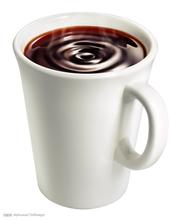"Yega Snow Coffee" Fine African Coffee Coffee characteristics Coffee beans Coffee
The term "fine coffee" was first put forward by Ms. Knudsen of the United States in Coffee and Tea magazine. At that time, Ms. Knudsen, as a coffee buyer of B.C. Ireland in San Francisco, was very dissatisfied with the neglect of the quality of raw coffee in the industry, and even some big roasters mixed a large amount of Robesda beans in the comprehensive beans, so she put forward the concept of fine coffee to advocate the improvement of the quality of the industry. This term is used to describe coffee beans with distinctive flavor characteristics that grow in a special environment. Its use in international coffee conferences makes it spread rapidly.
The coffee-producing region of Ethiopia is divided into east and west parts by the East African Rift Valley, with lakes, volcanoes, lowlands, plateaus and woodlands interlaced, each evolving. Ethiopia has the most diverse coffee ecosystem in the world (forest coffee, semi-forest coffee, pastoral coffee and plantation coffee), which also preserves its rich Arabica genes. Most of the eastern half is the plateau, and the coffee beans taste better, such as Yega Chefe and Sidamo, which are popular with bright sour taste, and Harald, which is charming and "miscellaneous"; the western half is covered with a large area of primeval forest, and most of them are in the process of completely natural evolution. it has created more complex coffee varieties, and the coffee varieties in the Kafa forest in the southwest are highly resistant to disease. Due to natural evolution and less manual screening, its overall flavor is slightly lower than that of the eastern half of the wall.
The coffee producing areas of Ethiopia are Hidamo, Harald and Sidamo, Harrar and Yirgacheffe. Sidamo and Harrar are provinces and divisions, Sidamo is located in the south of Ethiopia bordering Kenya, and Harrar is bordering Somalia in the east of Ethiopia. Although Yirgacheffe is a community in the Sidamo region, its coffee is considered to be the best in Ethiopia because of soil composition and water content.
Yirga Cheffe grows in the southern Ethiopian plateau at an altitude of 5700-7800 feet above sea level. It is located in the northwest of Sidamo province. It is located in the area of Lake Abaya. It is usually obvious in sweetness and is favored by most people. Its annual production is about 225000bags/60kg. Its bean body is smaller than Longberry. It is greenish in color and gray in color. Most of it is washed. In the washing plant, the coffee fruit is fermented in the storage tank full of water after harvest, and the workers use a simple wooden rake to stir it to facilitate the smooth cleaning. The washing plant always has a pungent acid fermentation smell and the sound of the fruits in the sink colliding with each other. After the fruit is sticky and soft, it is directly shelled and cleaned, leaving only the fruit covered with sheepskin. After the final washing, the fruit is dried directly outside the washing plant. Taste similar to lemon and citrus complex, excellent taste viscosity, complex flavor, mostly exported to G2, suitable for medium baking as a single product. A small town in eastern Egypt, 1800-2000m above sea level. The ancient saying "Yirga" means "settle down" and "Cheffe" means "wetland". Yejaschen, which is attached to the Sidamo region, is very popular in the world boutique coffee circle because of its unique jasmine fragrance and citrus acid. This special taste is also known as "Yejashifen" taste. According to the defect rate of raw beans, Yejia snow caffeine can be divided into five grades of G1~G5 from good to bad. It is generally washed with water, but there are also a small number of excellent beans intended to be insolated to enhance the charming fruit aroma and mellow thickness.

Important Notice :
前街咖啡 FrontStreet Coffee has moved to new addredd:
FrontStreet Coffee Address: 315,Donghua East Road,GuangZhou
Tel:020 38364473
- Prev

Kenyan coffee varieties African coffee bean flavor boutique coffee characteristics
The Kenyan coffee variety was first brought to Kenya to be planted in Bourbon bourbon. In the 1950s, the then agricultural research institution Scott Laboratory selected two excellent hybrids, SL-28 and SL-34, through unremitting efforts, subverting the long-standing prejudice that artificial breeding varieties are not excellent natural varieties. SL-28 、 SL-
- Next

Bolivian coffee roasting degree estate production area introduction (snow vein estate)
One third of Bolivia's territory is Andean, rugged terrain, mainly road transport, accounting for more than 85 per cent of transport. The main railway and road networks are concentrated in the west, and remote areas rely on air communication. However, road coverage is the lowest in South America. Moreover, there is also the Ronggas Highway, the world's most dangerous road known as the Road of Death. It has no developed economy, it's the poorest in South America.
Related
- Does Rose Summer choose Blue, Green or Red? Detailed explanation of Rose Summer Coffee plots and Classification in Panamanian Jade Manor
- What is the difference between the origin, producing area, processing plant, cooperative and manor of coffee beans?
- How fine does the espresso powder fit? how to grind the espresso?
- Sca coffee roasting degree color card coffee roasting degree 8 roasting color values what do you mean?
- The practice of lattes: how to make lattes at home
- Introduction to Indonesian Fine Coffee beans-- Java Coffee producing area of Indonesian Arabica Coffee
- How much will the flavor of light and medium roasted rose summer be expressed? What baking level is rose summer suitable for?
- Introduction to the characteristics of washing, sun-drying or wet-planing coffee commonly used in Mantenin, Indonesia
- Price characteristics of Arabica Coffee Bean Starbucks introduction to Manning Coffee Bean Taste producing area Variety Manor
- What is the authentic Yega flavor? What are the flavor characteristics of the really excellent Yejasuffi coffee beans?

